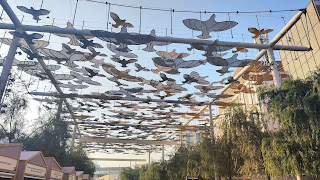Habitat III
In 1996 I had the pleasure of attending and participating in the Habitat II called the City Summit. It was held in Istanbul and to some extent developed further the human settlement chapter of Agenda 21. What was particular important for stakeholders was the approach taken by the conference towards engaging them. It was the first and ONLY UN conference where stakeholders were given both in the preparatory process and the conference itself a seat at the table and were allowed to enter text into the negotiations. If. Member state picked up the suggestion it became part of the negotiations. In addition in Istanbul the UN again for the first time brought out the stakeholder amendments to the text as an official information document for member states and distributed it.
The other major innovation was that the conference had two committees one for negotiations and one for stakeholder implementation where each stakeholder had half a day to present their thOughts in an interaction with member states and other stakeholders. This became the basis of what the UN GA then proposed for the Rio+5 and ultimately the stakeholder dialogues that were held at the UN Commission on Sustainable Devlopment from 1998 to 2001. A fascinating experiment where 12 hours of negotiations at the beginning of the CSD were given to a dialogue between 3 or 4 stakeholders and member states on 4 different issues. It still represents the best model on how member states and stakeholders can engage before formal negotiations start.
This brings me to Habitat III - Towards A New Urban Agenda - why is this important?
The proportion of urban population to total population stood at 16% in the 19th century; in 1996 it stood at 46%. Currently it is more than 50% of the worlds population lives in cities and large twins and this figure will rise to 66% by 2050.
This has a huge impact on the consumption of resources, something like 70% of climate change is caused by the urban areas, they are also a huge use of water, energy and food. The urban nexus is a critical area of work to ensure that we can live sustainably in the future. Urban centres depend on rural areas for a range of goods anpd services such as the nexus areas. The conference will need to address the urban rural linkages if it is going to be successful. Urban-rural linkages can also cover range of complementary functions and flows of people, capital, goods, employment, information and technology between rural and urban areas.
Tomorrow April 14th the second Habitat Prepcom will begin in Nairobi this is a vital meeting to help address one of the SDGs in more depth. The Habitat conference will be in October 2016 and will be the first major UN conference post agreeing the SDGs. Start engaging now in the Habitat process to help make the SDGs real at the local level.
The other major innovation was that the conference had two committees one for negotiations and one for stakeholder implementation where each stakeholder had half a day to present their thOughts in an interaction with member states and other stakeholders. This became the basis of what the UN GA then proposed for the Rio+5 and ultimately the stakeholder dialogues that were held at the UN Commission on Sustainable Devlopment from 1998 to 2001. A fascinating experiment where 12 hours of negotiations at the beginning of the CSD were given to a dialogue between 3 or 4 stakeholders and member states on 4 different issues. It still represents the best model on how member states and stakeholders can engage before formal negotiations start.
This brings me to Habitat III - Towards A New Urban Agenda - why is this important?
The proportion of urban population to total population stood at 16% in the 19th century; in 1996 it stood at 46%. Currently it is more than 50% of the worlds population lives in cities and large twins and this figure will rise to 66% by 2050.
This has a huge impact on the consumption of resources, something like 70% of climate change is caused by the urban areas, they are also a huge use of water, energy and food. The urban nexus is a critical area of work to ensure that we can live sustainably in the future. Urban centres depend on rural areas for a range of goods anpd services such as the nexus areas. The conference will need to address the urban rural linkages if it is going to be successful. Urban-rural linkages can also cover range of complementary functions and flows of people, capital, goods, employment, information and technology between rural and urban areas.
Tomorrow April 14th the second Habitat Prepcom will begin in Nairobi this is a vital meeting to help address one of the SDGs in more depth. The Habitat conference will be in October 2016 and will be the first major UN conference post agreeing the SDGs. Start engaging now in the Habitat process to help make the SDGs real at the local level.



Comments
Post a Comment